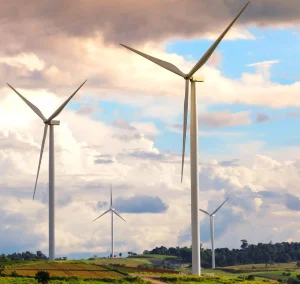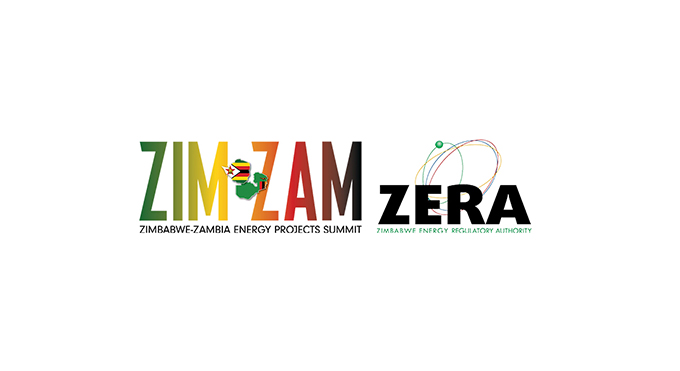The upcoming Zimbabwe-Zambia Energy Projects Summit, set for November 18-20, 2024, in Victoria Falls, represents a crucial turning point for energy investment in Southern Africa. This event is not just about meetings and discussions; it’s about laying the groundwork for a sustainable and prosperous energy future for both nations and the broader Southern African region.
For Edington Mazambani, the Chief Executive Officer of the Zimbabwe Energy Regulatory Authority (ZERA), this summit arrives at a pivotal moment.
It offers Zimbabwe and Zambia an unparalleled opportunity to unlock significant investment potential in their energy sectors, especially as the world shifts away from fossil fuels toward more sustainable alternatives. The timing is particularly relevant as the region grapples with energy shortages exacerbated by drought conditions that have severely impacted hydropower capacity at Lake Kariba, a shared resource between the two nations.
The summit provides a platform for key industry players, policymakers, and international investors to explore opportunities, forge new partnerships, and find innovative solutions to the region’s energy challenges.
Zimbabwe’s recent economic strides since the inception of the Second Republic further enhance the importance of this event, as the country works towards achieving its ambitious goal of becoming an upper-middle-income society by 2030.

Central to this vision is energy—seen not just as a necessity but as a catalyst for sustainable development.
The emphasis on attracting investment in renewable energy forms, such as solar and wind, aligns perfectly with global trends in transitioning to cleaner power sources.
Why is this moment particularly crucial for Zimbabwe and Zambia?
The answer lies in the region’s ongoing energy deficit. While there have been instances of excess power in pockets, the situation has worsened, largely due to El Niño’s adverse effects on water levels at Lake Kariba, the region’s hydropower backbone. Capacity has dropped drastically from 1,050 megawatts to less than 200 megawatts per day, a significant shortfall for countries already stretched thin in terms of energy resources.
With mining, manufacturing, and agriculture driving the demand for power higher, it’s clear that renewables must play a more prominent role in Zimbabwe and Zambia’s energy mix.
Renewable energy sources like solar and wind are seen as essential not only for their environmental benefits but for their ability to offer resilience in the face of climate-related disruptions. The summit will facilitate discussions on how best to pivot towards these energy solutions and, most importantly, how to secure the necessary investment to make this transition successful.
Looking forward, the next decade promises to be transformative for Zimbabwe’s energy landscape. Positioned strategically within the Southern African Development Community (SADC), Zimbabwe aims to become a regional energy hub, facilitating grid connectivity across the region.
The country’s central location is a critical asset, but it also brings a responsibility: Zimbabwe must modernise its electricity grid to avoid becoming a bottleneck in the region’s power distribution.
One of the most exciting prospects on the horizon is the Batoka Gorge Hydropower Project, a joint initiative between Zimbabwe and Zambia, set to generate 2,400 megawatts of power, to be shared equally between the two countries.
This project is expected to significantly enhance energy security while creating jobs and boosting economic growth. In addition, Zimbabwe’s rich lithium deposits position the country as a future hub for battery storage manufacturing, a crucial component of the renewable energy ecosystem.
Moreover, the discovery of natural gas reserves in northern Zimbabwe opens up new opportunities for gas-to-electricity projects, particularly in rural areas where communities have historically relied on firewood for their energy needs.
These developments not only promise to transform the country’s energy sector but also provide a clear pathway toward meeting Zimbabwe’s commitment to the United Nations’ Sustainable Development Goals, particularly universal access to modern energy services by 2030.
From a regulatory perspective, ZERA has been proactive in encouraging new investors to enter the market. Initiatives such as tax holidays for renewable energy projects, lower corporate tax rates, and the granting of National Project Status have already attracted significant local and international interest.
Furthermore, the introduction of off-grid tariff-setting tools, developed in collaboration with the African Forum for Utility Regulators, aims to make rural electrification via mini-grids a more attractive investment opportunity.
.
The historical and geographical connection between Zimbabwe and Zambia plays a significant role in
their energy collaboration. The two nations, which once formed part of the Federation of Rhodesia and Nyasaland, continue to share the Kariba Dam’s hydroelectric power, split evenly between them. Both countries also belong to the Southern African Development Community, with Zimbabwe, in particular, serving as a vital energy corridor for the region.
As the world shifts its focus to sustainable energy solutions, the Zimbabwe-Zambia Energy Projects Summit serves as a beacon of opportunity. With energy shortages threatening economic growth, now is the time for Zimbabwe and Zambia to take decisive steps to secure their energy futures. This summit provides the ideal platform for doing just that, bringing together global investors and regional stakeholders to forge partnerships that will power the region’s growth for years to come.
For ZERA and its counterparts in Zambia, the excitement lies in the prospect of matching international investors with local energy opportunities, facilitating dialogue that could lead to tangible projects in renewables, grid modernization, and enhanced energy access. The summit is not just a gathering—it’s the starting point for a sustainable, prosperous energy future for Zimbabwe, Zambia, and Southern Africa as a whole.
Text: Farai Chaka
From: E&P ISSUE 12

